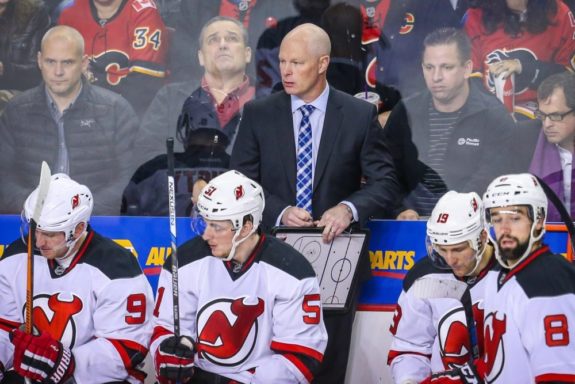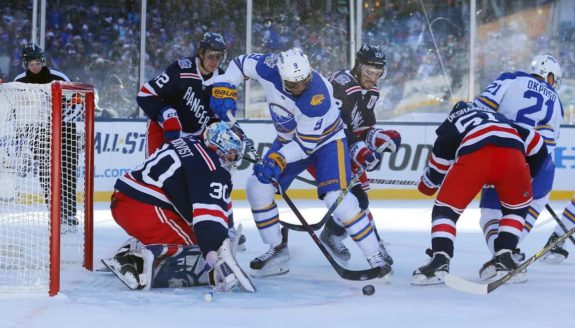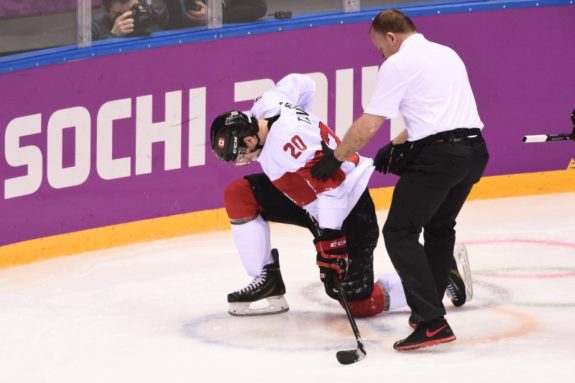Yes friends, it’s finally over.
As the month of January draws to a close, the National Hockey League bye weeks are over, as well.
And good riddance. Not only do bye weeks needlessly compress the season, they produce a brutal product in the games that follow. They also contribute to what is essentially a two-month stretch in which the NHL, partly due to competition and partly due to its own stupidity, is just about the least appealing sport to pay attention to.
As well-intentioned as bye weeks are, it’s time for them to go.
History of the NHL Bye Week
Bye weeks for NHL teams came about ahead of the 2016-17 season when the league wanted to change the format for the All-Star Game to three-on-three. The National Hockey League Players Association proposed bye weeks as a fair exchange, the theory being that a mid-season break would do wonders for players’ physical well-being. The league accepted and, thus, a five-day break – from games and practices – was built into the schedule of every team.
Last season, the bye weeks were quite spread out, leading to perceived disadvantages for teams coming off of their breaks. I mean, what did the league expect to happen when a team that hasn’t done anything for nearly a week plays a team firing on all cylinders? How else could that possibly end?

This season, the bye weeks were more compressed, to help eliminate said mismatches. Of course, without proper schedule planning (i.e. ensuring teams’ first games after bye weeks are against teams who had the same break), some disadvantageous matchups still slipped through.
Additionally, and perhaps most importantly, it created an NHL drought – a large chunk of January with very little hockey, giving people even more excuses to not pay attention.
NHL Bye Weeks and Hockey Fandom
Okay, two weeks isn’t exactly a long time to live without hockey. And it wasn’t a totally barren wasteland either, just half the amount of games there should have been.
The problem is that the situating of the bye weeks in mid-January stitched together a nearly two-month period in which there weren’t a whole lot of reasons for a sports fan to choose the NHL.
It started with Christmas, when the NHL had no games between Dec. 24 and Dec. 26. That’s fair enough.
But then the World Juniors began, taking over the last week of December and the first week of January. The Spengler Cup was in there too, if you’re into that sort of thing.
Yes, the Winter Classic took place Jan. 1, but that’s more of a regional thing at the best of times, and especially so when it features a mediocre team (the New York Rangers) facing a terrible team (the Buffalo Sabres).

After the World Juniors, the bye weeks began, lasting from Jan. 7 to Jan. 19. The league briefly roared back to life, only to then take Jan. 26 to Jan. 29 off for All-Star Weekend. While the event has gotten a lot better in recent years – particularly the game itself (though the changes to the Skills Competition this year were pretty sweet, too), again, it’s more of a regional thing. It’s a fun, engaging event for the fans in the surrounding area, but it’s not exactly a must-watch for everybody else.
While we’re turning the calendar over to February, let’s also not forget the buildup to the National Football League’s climax has been ongoing for well over a month, with the Super Bowl taking place Feb. 4.
At this point, we’re now only days away from the opening of the Winter Olympics (Feb. 9), which is sure to take at least some general sports fans away from watching the NHL, but will also likely draw in many hockey fans, curious to see who’s representing their country in the absence of NHL players. Yes, the games will be at odd hours, but they are frequently replayed and, more importantly, the storylines will matter, too.
The plucky kid who couldn’t crack the NHL. The grizzled veteran making one last stand. A nation’s pride on the line. For most people, I’d wager the Olympics trump an inconsequential mid-February NHL game, nearly every single time.
So, basically, there’s no real excitement the NHL can drum up until the Trade Deadline, Monday Feb. 26 (and yes, you’re reading that right; they’ve put the deadline on a Monday this year).
NHL Bye Weeks and Player Safety
Speaking of the Olympics, a major reason the NHL gave for not attending was the risk to player safety. And that’s fair enough; Olympic participation forces teams to play the standard 82-game season in less time than usual, reducing practice time and increasing fatigue.
Plus, the very best players in the world are having to not only play that compressed schedule, but also in an international tournament at the highest level – in which they risk their health for no benefit to their NHL teams (remember what happened to John Tavares?).

That’s not easy on anyone’s body, to be sure. But the institution of bye weeks has done largely the same thing, compressing the schedule, limiting practices and burning out players.
Of course, we all know the primary rationale for not going to the Olympics was that the NHL was upset (somewhat justifiably) they couldn’t make money off their players participating. They had no problem with the World Cup back in 2016, which compressed the schedule and exposed top players to needless risk in a tournament that yielded little benefit to their NHL teams. Why? Because money, that’s why.
Bye Weeks Good in Theory, Not in Practice
Clearly, a large part of the problem with bye weeks is their scheduling; the NHL, in trying to compress the bye weeks, essentially created a two-month dead zone for the league. Another major issue is that they don’t appear to make players any safer, and may even put them at greater risk. Furthermore, most fans got very short-changed this past month, enduring a lengthy gap in the schedule and then watching at least one garbage game in which their rusty squad got steamrolled by a team who spent the preceding week, you know, actually playing hockey.
You really have to feel for the players on this one. It’s so very rare they get any concessions from the NHL during negotiations.
The NHL is like a schoolyard bully; every day, the league throws the players into a locker and steals their lunch, and then just locks the door if they complain. The bye week compromise was like the NHL tossing the NHLPA the leftover crust from their own sandwich; finally, a victory!
And yet, it turns out bye weeks compress the season, place players at greater risk, handicap a team’s chances while they get back up to speed and utterly ruin the momentum of the already lethargic NHL campaign.
Bye weeks were instituted with the best of intentions. Now it’s time to acknowledge the mistake; scrap them and move on.